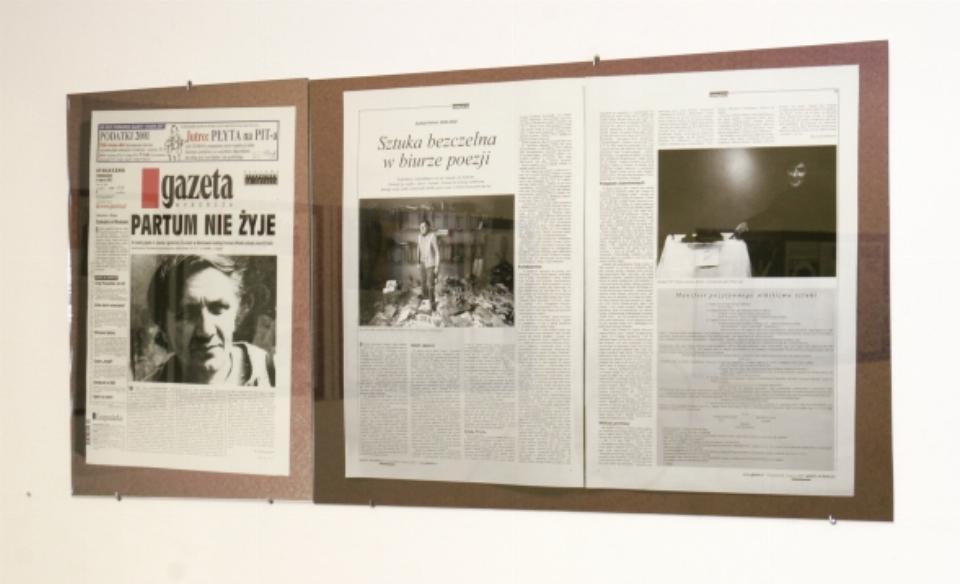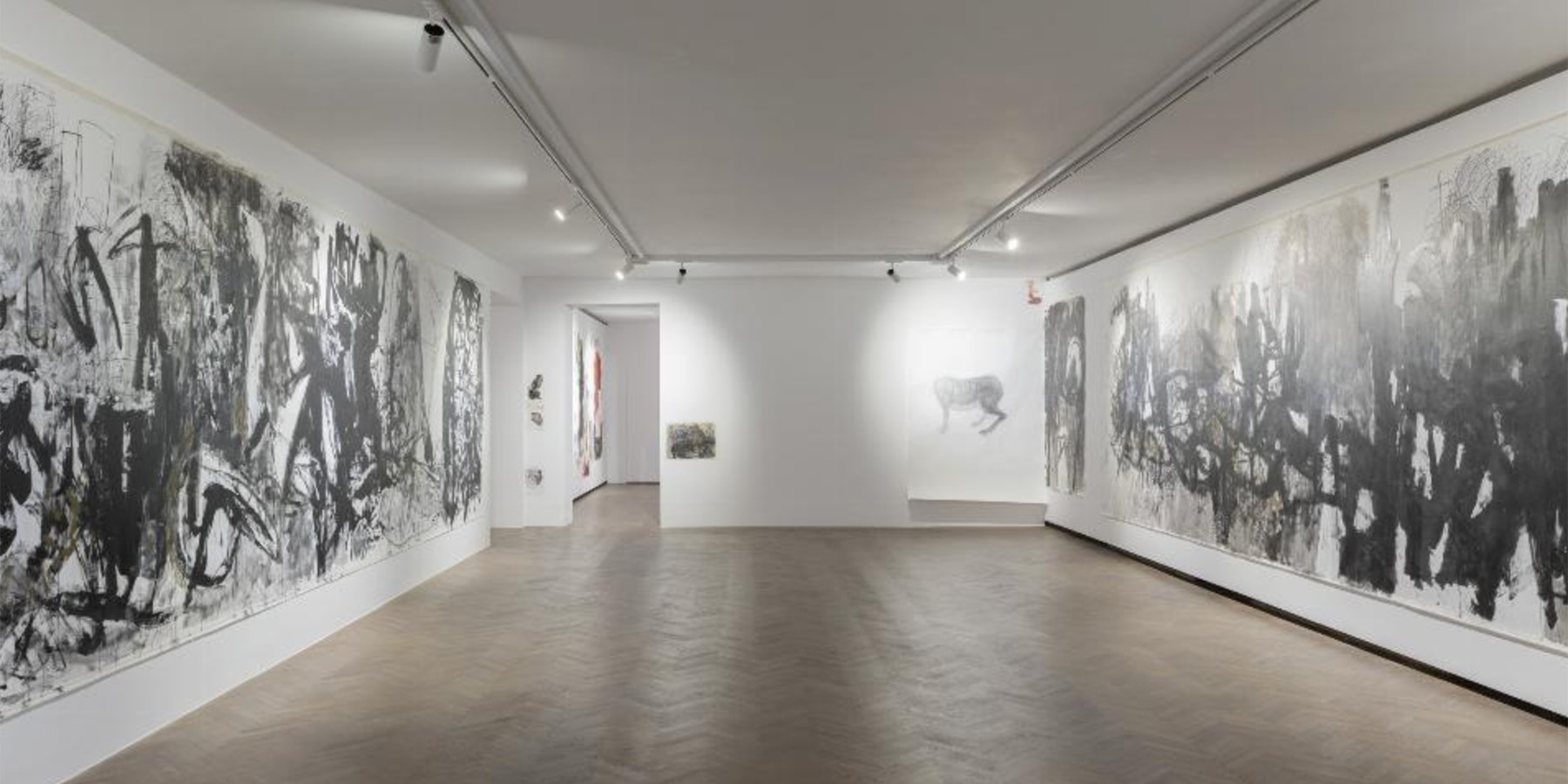Zbigniew Libera
Masters
Zbigniew Libera
Masters, 2004, 15 photographs (eleven sized 70 x100 cm, two sized 70 × 90 cm, two sized 70 × 50 cm)
Work deposited at the Arsenal Gallery in Białystok

Masters by Zbigniew Libera is a cycle of simulated newspaper articles concerning selected artists of the Polish New Avant-garde, active mostly in the 1970s. From the formal point of view, the articles conform to the convention of similar pages in the high-circulation weeklies, such as Polityka and Magazyn Gazety Wyborczej, reflecting their layout and graphic design; some of the seventeen pages arranged by Libera, including those on Zofia Kulik, Andrzej Partum, Leszek Przyjemski, Jan Świdziński and Anastazy Wiśniewski, were published as newspaper articles before they gained the status of works of art. Similarly to another work by Zbigniew Libera, The Final Liberation (2004) , they were located in a seemingly appropriate context and published in, among others, Gazeta Wyborcza.
Libera commented that Masters constitutes his homage to artists who significantly influenced the art of the 1980s and ‘90s, but are nevertheless still placed outside the course-book history of art. In an interview, Libera emphasised the relationships he had observed between the oeuvre of his masters and the works of contemporary artists. The simulated articles, due to which the selected artists are situated by Libera in the scientific content, including them, so to speak, into the bibliography of artistic activity in the 1970’s, construct an alternative, private narrative regarding the not-so-distant past of the New Avant-garde .
Libera’s work by far exceeds subjective assessment of art history, however. The Masters cycle refers to more universal issues linked with the mechanisms of writing art history, creating canons , as well as the exclusion of some artists and inclusion of others into those canons. These mechanisms have always been at work, although at different points in history they may have been conditioned by various social, political and economic factors. Analyses of those phenomena by critics and historians of art often result in subverting obligatory canons and developing alternative models of historical narratives, and thus in bringing marginalised issues and tendencies to light. Feminist history of art constitutes an instance of this process.
Libera has subjected Polish art to a similar analysis. In creating the Masters cycle, he has used a medium which is a common tool in the process of an artist’s exclusion or apotheosis. The newspaper-page convention of these works refers to the function of the press as the canon-creating and opinion-forming element. After all, it is the press that constitutes an arena for debates that are crucial to artists and curators alike. Questions concerning the relevance, validity and authoritativeness of journalists’ choices, the arbitrariness of their opinions and the power with which such opinions shape the image of the art scene are the backdrop to Libera’s work.
Izabela Kopania
translated from Polish by Klaudyna Michałowicz

PLAN YOUR VISIT
Opening times:
Thuesday – Sunday
10:00-18:00
Last admission
to exhibition is at:
17.30